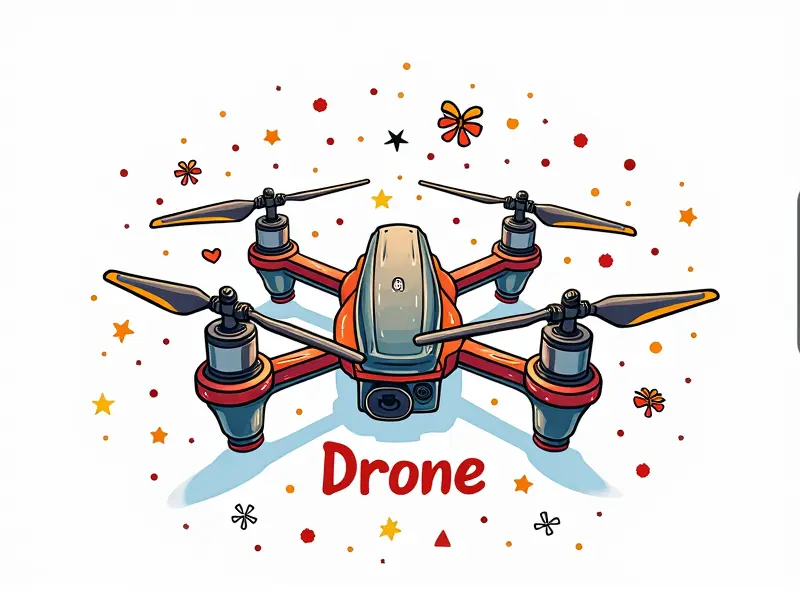How do I fly a drone manually?

Mastering Manual Drone Flight Basics
Flying a drone manually is an exhilarating experience that requires patience, practice, and a good understanding of the basics. To start your journey into manual drone piloting, it's essential to familiarize yourself with the controls and components of your drone.
Understanding Your Drone’s Controls
- Throttle: This control adjusts the power output to the motors, allowing you to ascend or descend. Proper throttle management is crucial for stable flight.
- Ailerons (Roll): These controls tilt your drone left and right, enabling it to perform lateral movements.
- Elevators (Pitch): Used to move the drone forward or backward by tilting its nose up or down.
- Rudder (Yaw): This control rotates the drone around its vertical axis, allowing you to turn left or right without moving laterally.
Familiarizing with Drone Components
Before taking off, ensure you know your drone's components:
- Battery: Check the battery level and condition before each flight.
- Propellers: Inspect propellers for any damage or debris that could affect performance.
- Gimbal: The gimbal stabilizes your camera, ensuring smooth video footage during manual flights.
How to Fly RC Quadcopters Manually
Flying a quadcopter manually involves mastering the art of balancing all four motors. Here’s how you can get started:
Initial Setup and Safety Checks
- Pre-flight Inspection: Check for loose parts, battery connections, and propeller balance.
- Safety Gear: Wear protective gear like goggles or glasses to shield your eyes from debris.
- Flying Area: Choose an open space away from people, obstacles, and restricted airspace.
Taking Off and Landing Techniques
To take off manually:
- Gently increase throttle to lift the drone off the ground.
- Maintain a steady altitude using slight adjustments in pitch, roll, and yaw.
- For landing, gradually decrease throttle while adjusting for wind direction.
Secrets of Smooth Manual Drone Flight
Achieving smooth manual flight requires practice and an understanding of your drone's dynamics:
Maintaining Stability in Windy Conditions
- Anticipate Wind Direction: Adjust pitch and roll to counteract wind gusts.
- Use Yaw for Fine-Tuning: Rotate your drone slightly to stabilize it during strong winds.
Mastering Hover Techniques
- Neutral Control Input: Learn to hover by balancing all controls at neutral points.
- Slight Adjustments: Make small adjustments in pitch, roll, and yaw for precise hovering.
Essential Skills for Manual Drone Piloting
To become proficient in manual drone piloting, focus on developing these key skills:
Hand-Eye Coordination
- Visual Tracking: Keep your eyes on the drone at all times to anticipate its movements.
- Quick Reflexes: Develop quick reflexes for immediate corrections during flight.
Spatial Awareness
- Distance Perception: Understand your drone’s distance from obstacles and terrain features.
- Airspace Navigation: Be aware of airspace regulations and restrictions in your area.
Learn Manual Drone Flying Techniques
Mastering manual flying techniques is crucial for achieving smooth, controlled flights. Here are some advanced techniques to explore:
Advanced Maneuvers: Rolls and Loops
- Roll: Perform a barrel roll by tilting the drone sideways while maintaining altitude.
- Loop: Execute a loop-the-loop maneuver to add excitement to your flight.
Serious Camera Work: Gimbal Control
- Pan and Tilt: Use the gimbal controls for smooth camera movements during manual flights.
- Zooming In: Adjust your drone’s altitude to get closer shots without moving laterally.
The Art of Manual Drone Piloting
Flying a drone manually is an art form that combines technical skills with creativity. Here are some tips for elevating your piloting skills:
Practice Makes Perfect
- Daily Practice: Regular practice sessions help you refine your techniques and build confidence.
- Vary Your Environment: Fly in different conditions to adapt to various challenges.
Innovative Flight Patterns
- Create Unique Paths: Experiment with new flight paths for unique aerial footage.
- Challenge Yourself: Set goals and push your limits to discover new possibilities in manual flying.
Top Tricks for Manual Drone Piloting
To take your manual drone piloting skills to the next level, try these top tricks:
Drone Racing Techniques
- Sprint and Dash: Use quick bursts of speed to navigate through tight spaces.
- Avoid Obstacles: Master sharp turns and dives to avoid obstacles during races.
Stunt Flying Tricks
- Corkscrew Maneuvers: Perform corkscrews for a dramatic effect in your footage.
- Inverted Flight: Fly upside down to capture unique aerial shots.
Navigate Like a Pro: Manual Drone Flight
Becoming an expert at manual drone navigation involves mastering the art of reading and reacting to environmental cues:
Reading Terrain Features
- Hills and Valleys: Adjust your altitude based on terrain elevation changes.
- Rivers and Streams: Use natural waterways as visual references for navigation.
Using GPS Coordinates
- Set Waypoints: Program specific coordinates to guide your drone through complex routes.
- Track Your Path: Utilize GPS data to monitor and adjust your flight path accurately.
Become a Master of Manual Drone Piloting
To become a master of manual drone piloting, focus on continuous learning and skill development:
Stay Updated with Technology
- New Drone Models: Keep up-to-date with the latest advancements in drone technology.
- Innovative Accessories: Explore new accessories that enhance your manual flying experience.
Join a Community of Pilots
- Online Forums: Engage with other pilots to share tips and tricks.
- Local Clubs: Join local drone clubs for hands-on learning opportunities.
Conclusion
Mastery of manual drone piloting is a rewarding journey that combines technical skill, creativity, and continuous learning. By practicing regularly, experimenting with new techniques, and staying updated with the latest advancements in drone technology, you can elevate your flying skills to new heights.
Remember, becoming an expert takes time and dedication. Embrace every flight as an opportunity to learn and grow, and soon you'll be navigating like a pro!

